
International Trade Consultants
"Overlooking Runway 25 - Right, at Los Angeles International Airport"
Page Number 12
Year 2007 Second Half
The Individual Moments of Transport Crisis
Which Don't Constitute A Full Page Feature
"Singles Only" Year 2007 Second Half - Our Feature Page - Page #12 - Our "Singles" Photo Features By Date
"Full Power Run Up" - Etihad Airways - Nov. 2007"Just Scraping By" - M/V Cosco Busan - Nov. 2007
Somali Pirate SmackDown - USS Porter - Oct. 2007
Please Do Not Park On The Fuel Truck - Nov. 2007 - Østfold County, Norway
Irony - Oct. 2007 - Katowice, Poland
Oil Rig Vs. Drilling Platform - Oct. 2007 - Gulf of Mexico
Another Step For Mankind - Sept. 2007 - Panama Canal
Another Day At The Beach? - Sept. 2007 - M/V Maersk Diaddema
Extinguishing The Flame? - 12 August 2007
Beach Detour - 17 July 2007
Shanghai Cutoff - 9 July 2007
Only A Few Picture Series Result In A The Cargo Letter Photo Feature Page.
For All The Rather Amazing Single Picture Contributions We Recieve --
-- Here Are Our Selected One Photo Wonders!
The Air & Ocean Logistics- Customs Broker Attorneys
International Trade Consultants
"Overlooking Runway 25 - Right, at Los Angeles International Airport"
Countryman & McDaniel
Transport Single Photo Nightmares
Contributed By Our
Readers*
REURN TO "Singles
Only"
MAIN INDEX The
New
Etihad Airways A340-600
Before
Last Engne Test The
New
Etihad Airways A340-600
After
Last Engne Test No
Etihad
Airways
staff were involved in the incident, said the
airline's Bahrain-based general manager for
northern Gulf, Hussam Al
Aseeri. The
aircraft which slammed into a wall on Nov. 15
was undergoing final pre-delivery tests A
full power run-up. Most of
the people involved in the aircraft are
employees of
Abu
Dhabi Aircraft
Technologies,
a Middle Eastern maintenance company. Airbus
staff were also present. Although
the aircraft is in
Etihad
livery,
it is not registered to
Etihad
yet. It currently has a French
registration. Of
the 3 persons remaining in hospital, one is
an employee of Abu Dhabi Aircraft
Technologies (ADAT), a contractor working for
Etihad, and 2 are Airbus employees. Injuries
sustained to them are not
life-threatening. Etihad
Airways
said an accident involving an
Airbus
A340-600
aircraft due to be delivered to the Abu
Dhabi-based airline is unlikely to have a
'significant impact' on its operations,
although the full impact has not yet been
assessed, he said. The
aircraft, one of two
A340-600s
due to be delivered by the end of the year,
to complete the order of 4, was intended 'as
a back-up aircraft to support overall fleet
maintenance,' an Etihad spokesman said.
However, 'it is too early to assess the
impact of the loss of the aircraft on
operations,' he added. Etihad
said in a statement that it 'has been made
aware that a number of people have been taken
to hospital following the ground incident in
which the aircraft sustained significant
airframe damage during routine engine
performance tests.' The
accident took place at Airbus's Saint-Martin
site at Toulouse
Blagnac,
adjacent to the city's airport. Airbus
confirmed that
5
of the 9 people on board aircraft MSN 856
were injured;
there were no fatalities. Airbus
confirmed that of the 5 people injured, 3
remained in hospital. One is an employee of
Abu Dhabi Aircraft Technologies, and two are
Airbus employees. Etihad
currently operates two
A340-600
aircraft, with 2 more, including the one
involved in the accident, due for delivery by
the end of the year. OTHER
RECENT
A340
PROBLEMS: A loaded Iberia
A340-600
departed a runway while landing in Ecuador on
Nov. 9. At least one tire burst as Flight
6463, inbound from Madrid with 330 passengers
onboard, landed at Quito's Mariscal Sucre
Airport November 9, reports The Associated
Press. The aircraft skidded off the runway,
and came to rest tipped on its left wing with
the number 1 and 2 engine nacelles bent
inboard on their pylons. "Just by
looking at the jet, you could tell there was
major damage," said airport director Diego
Pachel. Local media reports say it was
raining at the airport at the time of the
accident. The plane
was still off the runway this week, as crews
prepared to paint over the "Iberia" logo -- a
common airline practice with aircraft still
visible following an accident. The
A340-600
is the largest aircraft approved to land at
Mariscal Sucre, which is in the heart of
Quito and sits at 9,200 feet
MSL. The
incident is the 2nd in 3 months involving an
Iberia A340-600
landing in Quito. A second aircraft also
burst its tires following a hard landing at
the airport August 31. More
recently, on Nov. 1 2007, a South African
Airways
A340-600
departed the runway after landing at Cape
Town International Airport. That aircraft was
"taxiing at a very low speed" when the
plane's nosegear slipped off the runway,
according to the
airline. The
Cargo Letter Features
--
"Steeplechase"
--
This Event Has Now Expanded To A Full
Feature! Index For This
Feature: Contributor For This
Feature: How Does This Happen On
San Francisco Bay With A Harbor Pilot Aboard? The Embarked Harbor
Pilot Blames Vessel "Maintenance" For The Mishap
-- -- What Remains
Unspoken? M/V
Cosco Busan Had
Been Purchased Last Month -- Crew Was On Inaugural
Voyage Above:
U.S.
Coast Guard
Inspects Starboaard Side Damage At The Stern of
M/V
Cosco Busan Although not
officially detained, the captain and crew were
barred from leaving the vessel, which is docked
for repairs in Oakland, the Coast Guard
said. In command
at the time -- harbor pilot
Captain
John Cota
said he could hardly feel anything on the ship
-- suggesting that there wasn't much damage. The
ship didn't roll. There wasn't a loud sound.
Cota quickly radioed authorities over an open
radio network to report the ship had "touched"
the bridge, according to an official with
knowledge of the investigation. "Traffic, we
just touched the delta span" Capt. Cota is
alleged to have said. "You had a
competently manned ship with a pilot, all the
navigation and sensors," said
Admiral
Thad Allen,
Commandant, U.S. Coast Guard. There were
"probably some human error factors, but we need
to determine the facts, because there's no
reason a ship like that should have collided
with the bridge."
M/V
Cosco Busan
was departing Port
of Oakland
for South Korea when it struck a tower
supporting the western suspension span of the
Bay Bridge, cutting a 212-foot, 12-foot wide
gash in the ship's side. About 58,000
gallons of heavy-duty bunker oil poured out of
the vessel as it was moored near Treasure
Island. The oil sickened birds and formed
globules on more than 20 of the area's beaches.
It oozed along the San Francisco city waterfront
and out of the bay, beneath
the
Golden Gate
Bridge
toward Marin County. "Response
was set into play within an hour of the event
itself," Admiral Allen said Nov. 11. Regarding
the initial low estimate of 140 gallons of lost
oil, Allen said heavy fog and damage to the
ship's tanks hindered initial aerial and
on-ground evaluations of how much oil had leaked
from the ship. The
National
Transportation Safety
Board
is investigating the accident, and was
interviewing the pilot, the ship's crew, and
other pilots who were on the water at the time
of the crash on Nov. 7. The 26 crew had been on
its inaugural voyage on the ship, which the
current owner purchased last month. The NTSB
also intends to review the ship's voyage data
recorder, which should have recorded captain and
crew conversations on the bridge and other
information in the 12 hours leading up to the
bridge collision, Hersman said. As of Nov.
10, 23 beaches in the area remained closed.
Angel
Island State
Park,
the Bay's largest island, reopened Nov. 11, the
Coast Guard said.
Gov.
Arnold
Schwarzenegger
has declared a state of emergency, freeing money
to clean up the spill. Seven miles of
containment boom stretched across the bay has
collected more than 12,271 gallons of oil so
far, and another 4,000 gallons have evaporated,
officials said. Nearly 400
dead birds have been recovered from the bay,
while another 500 birds have been rescued alive
but soaked in oil, according to Lisa Curtis,
administrator of the Department of Fish and
Games Office of Spill Prevention and
Response. In 1989, the
oil M/T
Exxon Valdez
ran aground & fouled Alaska's
Prince
William Sound
with almost 11 million gallons of crude -- the
nation's worst ever oil spill. Thousands of
birds & animals died in the disaster,
according to the
National
Oceanic and Atmospheric
Administration.
Often birds and animals are threatened when they
come in contact with the oil and swallow it as
they try to clean themselves, said the NOAA Web
site. In addition to birds, oil spills can be
very harmful to fish and shellfish, NOAA
said. Twenty
wildlife teams were scheduled Nov. 11 to be the
bay, working to find sick birds so they can be
rehabilitated, Curtis said. On Nov. 10, the
state's other U.S. senator and a leading Coast
Guard official decried the
accident. Rear
Adm. Craig E.
Bone,
the U.S. Coast Guard's director of inspection
and compliance said "This incident should have
never ever occurred," he said. "There's systems,
there's capabilities, there's licensed
operators, there's a pilot on board the vessel,
there's the capacity and the capability to
safely navigate through this port and waterways
every day." He added, "But we have to move
beyond the incident and the fact that it
occurred and move forward into the response."
The California Dept. of Transportation said the
collision did no structural damage to the bridge
and there was no interruption of bridge traffic
-- more than 250,000 vehicles
daily. The Cargo
Letter for
Nov. 16 2007 --
Revelations We
Also know that the harbor pilot was
relieved/replaced by another pilot shortly after
the incident. He left the vessel
shortly. As
Controversy Grows -- A New Question Arises.
Knowing That A Bridge Collision Was Inevitable
At Some Point In History -- Why Did The
Oakland
Bay Bridge
Not Have Fenders Or Other Standard Guards To
Prevent Such Fuel Tank Damage To
M/V
Cosco Busan?
The Oakland
Bay Bridge Has
Just Undergone A Major Refit. Harbor Safety Has
Been Disregarded? While
The Media Condemns The Harbor Pilot -- We Stll
Have Questions. Issues of Current, Wind &
Visibility. These Issues & Others Have Yet
To Be Addressed. We Are Not Yet Ready To Place
Blame On he Harbor Pilot
--
Captain John
Cota.
Clearly
there was an informational and communication
failure on bridge of the vessel on Nov. 7
2007. Contributors For This
Feature: A.
Fairfax Hildegard
E. Krause -
Roanoke
Trade Services,
San Francisco Sophie
A Stockholm Christoph
M. Wahner, Esq. Rescued
Panama
Flagged
M/T Golden Nori A
Good Day For USS
Porter
(DDG-78)
--
Fired On & Sank Two Pirate Vessels U.S.
Navy Assistance To Mariners World Wide "Hi Pirate Guys!
-- U.S. Navy -- Prepare
To Be Boarded !" USS
James E. Williams -
A Somali Pirate Nightmare Rescue
of
M/V Dia Hong
-
North Korean Crew Wins The Day A spokesman for the
U.S.
5th Fleet in Bahrain
said that pirate attacks are not rare in the
U.S. Navy's area of operations and that "it's
our duty to help all vessels in
distress." According to the
military, the North Koreans asked for medical
assistance and gave permission for U.S. Navy
personnel to board M/V
Dai Hong
Dan.
When the Navy boarded the
ship with a small team of medics, security
personnel and an interpreter, the Koreans
already had regained control of the vessel and
detained all pirates, the U.S. Navy
said. One
pirate was dead & 3 were wounded, while 3
Korean sailors also were
wounded, the
U.S. Navy said. The Navy medics treated all 6
for gunshot wounds. The Korean sailors were
taken aboard the American destroyer and treated
there for 2 hours. They were returned to the
Korean ship the same night.
The pirates remain
detained on the Korean vessel, the U.S. Navy
said. On Oct. 30, a
helicopter flew from the USS
James E. Williams
to investigate a phoned-in tip of a hijacked
ship and demanded by radio that the pirates give
up their weapons, the military said in a
statement. The crew of the
M/V
Dai Hong
Dan
then overwhelmed the hijackers, the military
said. U.S.
Defense Department
spokesman Geoff Morrell said the incident didn't
indicate the U.S. military was taking a more
aggressive stance toward pirates off Somalia,
but added that piracy in the Horn of Africa
region is a concern because "you're talking
about an area that has seen greater terrorist
involvement." Morrell said it was
logical that the military would want to know
"what is being transported on the high seas and
who is out there operating and if they have
nothing but the best intentions in
mind." A U.S. Navy
spokeswoman, Lt. Jessica Gandy, said later that
the American destroyer had not been shadowing
the North Korean ship. She said it was not known
what its cargo was. The attackers were
believed to have been security guards hired by a
local ship agent, said Andrew Mwangura, program
coordinator of the Seafarers
Assistance Program,
which independently monitors piracy in the
region. An Int'l watchdog
reported this month that pirate attacks
worldwide jumped 14% in the first 9 months of
2007, with the biggest increases in the poorly
policed waters of Somalia and
Nigeria. Reported attacks in
Somali waters rose to 26, up from 8 a year
earlier, the London-based
International
Maritime Bureau
said through its piracy reporting center in
Kuala Lumpur, Malaysia. This is the third time
Somali pirates have been overpowered by
mariners. In
1989, crew members of the
MV
Alpha Mitchel managed
to overpower their captors in Somalia waters. In
2004, six crew members of the
M/T
Jenlil also
managed to escape to Yemen after overpowering
their captors in Somalia territorial
waters. Rescue of
M/T
Golden Nori -
U.S. Navy Sinks The Bad Guys Cmdr. Lydia Robertson,
the 5th Fleet spokesman, said
coalition
ships fired on and sank two pirate
skiffs tied to
Panama
flagged, Japanese
M/T Golden Nori.
A Navy photo showed one of the skiffs burning
after being hit by a gun aboard the
USS
Porter, a
guided-missile destroyer.
Robertson could not
confirm reports Oct. 29 that the Japanese tanker
was filled with highly flammable benzene. But
she said, "we were aware of what was on the
(M/T
Golden Nori)
ship when we fired." USS
Arleigh Burke,
another guided-missile destroyer, also was
involved in the operation and had entered Somali
waters with the approval of the
government. Somalia has had 16 years
of violence and anarchy and is now led by a
government battling to establish authority even in
the capital. Its coasts are virtually
unpoliced. Piracy
off Somalia increased this year after Ethiopian
forces backing Somali government troops ousted an
Islamic militia in December, said Mwangura at the
Seafarers
Assistance Program.
During the 6 months that the
Council of Islamic Courts ruled most of southern
Somalia, where Somali pirates are based, piracy
abated, Mwangura said. At
one point, the Islamic group said it was sending
dozens of fighters to crack down on pirates.
Islamic fighters stormed a hijacked,
United
Arab Emirates-registered
ship and recaptured her after a gunbattle in which
pirates &emdash; but no crew members &emdash; were
reportedly wounded. Index For This
Feature: USS
Porter
(DDG-78) USS
Arleigh Burke
(DDG-51) The
Somali Pirate Patrol Nations supporting
this effort have included
U.S.,
Britain,
Netherlands,
France,
Germany,
Spain,
Greece,
Belgium,
Denmark,
Italy,
Australia,
New
Zealand,
and Canada.
It is noticeable that China & Russia are not
included in the group. U.S.
Naval Support Activity, Bahrain Somali
Pirate Patrol --
pirate miscalculation --March 2006 Pirate
Payback
- USS Winstn Churchill - Jan. 2006 "They
opened one door to take pictures. We stood and
watched the helicopter when it tipped over on
one side. In a flash it crashed into a tanker
truck that was sitting on the plain," said
Bjørn Gunnar Torp. Witnesses
said that the helicopter circled for about 15
minutes before the crash. It is regularly seen
hovering over the area as the real estate
developer uses it to photograph progress on the
site. "A
person was filming or photographing from the
door opening. The helicopter suddenly started to
rotate, then it flew sideways into the tanker
truck. Then it smashed into the cabin and lay
there upside down," another witness
rep[orted. "The person filming managed to
get out on their own. The other two hung there
in their safety belts and had to be cut loose.
The whole thing was quite scary," Torp
said. The
fuel truck was empty at the time. The three
people in the helicopter were taken to hospital
but police said that none of them suffered
serious injury. Index For This
Feature: Contributor For This
Feature: Irony
-
Oct. 2007 - Kato In Recent Years Poland
Has Stepped Up In The War On
Terror. The Troops Are Now Home
-- But There Was A Problem on Oct. 27
2007 The
Air Europa Charter Boeing
737-800 Has Sheared Her Wing .. ... And Suffered Port Side Engine
Damage. The Air
Europa Charter Boeing
737-800 Has Taken Out The Approach Lights At Katowice,
Poland. This Occurred 27 October
2007 Nothing Like Living Through A Tough
A Posting In Beirut & Then Almost Buying The Farm On
Your Home Soil. The Irony Is Obvious -- Dodge All
The Al Qeada Bullets -- But Fail To Dodge The Landing Lights
At Home! This
Boeing
737-800
almost crashed, but was saved by quick pilot
action.
The flight was
chartered to bring Polish soldiers from the Middle
East and was on her way home from Beirut.
During the approach to
Katowice
in foggy conditions the aircraft descended too low
and damaged approach lights to the runway
stretching 870 meters before the runway. The
approach lights varied in height from less than 1
meter to 10 meters. The aircraft suffered
extensive damage to the fuselage, wings and the
engine coverings but managed to land safely with
111 passengers and 11 crew. Th
Polish
Aviation Authority
is investigating the accident. The aircraft will
remain in Katowice
for repairs. The repairs to the approach lights
will take a few weeks and will affect landings of
some aircraft in bad weather
conditions. Index For This
Feature: Contributor For This
Feature: Usumacinta
Platform Kab 101
Light-Production Rig
- After Collision The Result 21
Dead The accident
occurred 20 miles offshore from the
Port
of Dos Bocas
and caused gas & oil to spill into the Gulf
of Mexico, coast state of Tabasco. The crew was
unable to contain the oil leak.
Pemex,
Mexico's state-owned petroleum company was not
clear how much gas and oil has
spilled. The
Mexican
Navy
sent 8 rescue helicopters and 4 boats to helped
with initial rescue operation. Bad weather
had brought stormy seas & high winds
shutdown all Mexico's top 3 oil producers in the
Gulf. Over 81 workers abandoned a
Pemex
subcontractor's
Usumacinta
Platform
Oct. 25 after the platform hit the
Kab
101 Light-Production
Rig
amid 25-foot (8-meter) waves & winds gusting
to 80 mph (130 kph) which suspended most of the
country's oil shipments to the United
States. Workers
abandoned the rig amid 25-foot waves only after
leaking gas rose to unbearable levels and the
supply of air from emergency breathing devices
ran out. Once in the water, the waves battered
the workers' orange-colored, covered life
rafts. The
Usumacinta,
a mobile, self-raising drilling rig, was set up
next to Kab
101,
preparing to drill a well close to the platform.
The force of the waves caused of the rig's
"legs" to hit the valve assembly of the
platform, causing it to leak oil and gas. The
Usumacinta
Drilling Rig
is owned by the
Compania
Perforadora Central SA de
CV
and operates under contract to
Pemex. From
our Reader -
Oct. 29 2007 -- Did We Goof? Unfortunately
I have a problem with this story. The
top picture may well be
Kab
101,
it certainly looks like a "light production
platform" as reported in the various press
releases, but it's not
Usucaminta
which is shown in
Rigzone
as a Jack-up, not a small jacket. The
bottom picture is of the
Mars
TLP
post (I think ) Katrina, not either one of the
assets involved in the recent
Pemex
tragedy. Editor
Note: Well
Alistair,
you make a good point. We (you & us) should not
believe everything we read or see from the wire
& press reports. Here, our report is accurate,
but there is a question regarding one of our
pictures from the news services. Over the years we
have found that most all of of our reporting errors
come from the press -- while 99% of everything
posted from you readers has lasted the test of
time. One advantage of
Cargo
Law
is that we have World-Wide experts available to
correct the record. Our policy is to post all
reliable corrections to set the record
straight. Index For This
Feature: Port
of Dos Bocas
-
2nd largest exportation center of crude oil in
Mexico. Usumacinta
River
- supplied name for Usumacinta
Platform Contributors For This
Feature: Explosions Marks Start
of Panama Canal Expansion The
expansion will build a new lane for traffic
across the Panama isthmus. The expansion will
double capacity and new, larger locks will allow
longer and wider ships to ply the
waterway. "It's a
historic day. Expansion will have a significant
role in world trade and the maritime industry,
said Dani Ariel Kuzniecky, chairman of the canal
authority's board of directors and minister for
canal affairs. "We have
researched and planned this project for years;
we have the approval of the Panamanian people.
As we stand here today, our vision and
perseverance have paid off. Now, it is time to
execute. Now it is time to begin the expansion
of the Panama Canal," said Alberto Alemán
Zubieta, the canal's administrator and chief
executive officer. Among the
guests on hand were former U.S.
President
Jimmy Carter,
who 30 years ago signed the treaty that provided
for eventual transfer of the canal to Panama on
Dec. 31, 1999. The larger
locks in the new part of the canal will enable
larger ships to cross the isthmus. For example,
while the largest containerships that can use
the canal today carry about 4,500-5,000 TEUs,
the new waterway will be able to accommodate
vessels carrying about 12,000 TEUs.The first of
several excavation projects has already been
awarded and construction began on Monday during
a ceremony in which Panama President Martin
Torrijos, former U.S. President Jimmy Carter,
and heads of state from several Latin American
countries including Columbia, Honduras, El
Salvador and Nicaragua participated. Torrijos'
father, Omar, signed the 1977 treaty with Carter
that led to the canal being turned over from the
United States to Panama at the end of
1999. The
authority has also begun to process of
prequalifying bidders for design and
construction of the locks that will raise and
lower ships as they pass over the isthmus. It
expects to pick the four finalists to bid on
that project by the end of the
year. Aleman
expressed confidence that the new locks -- which
will increase the size of the largest
containerships transiting the canal from about
4,500 TEUs to 12,000 TEUs -- were the correct
size even though one shipping company, Maersk,
has already begun building some containerships
that would be too large to transit the new
canal. Maersk's largest ships are used on an
Asia/Europe route. "Most of the
ships that are being built will fit … and
there is a design that is being posted for
12,600 TEUs that is limited to the size of the
new locks of the Panama Canal," he said. "The
workhouse of the industry is going to be a ship
that will be around 9,000 TEUs. When you look at
what is being built, the main numbers of vessels
are in that area. "Panama is
fast becoming the most transportation hub and
logistics hub in the Americas," a port with
"terminals in two oceans" connected by a
railroad and a new highway that is slated for
completion in 2009, he said. Development
of terminals near both entrances to the canal
allows ships plying east/west routes to
interchange cargo with ships moving cargo to the
Pacific and Atlantic ports of Latin America, he
added. Aleman said
the bigger canal will benefit distribution
activity at the free trade zone in Colon and
distribution facilities being developed at a
former U.S. Army base near the Pacific entrance
to the canal. Other
sectors of the economy that will benefit from
the expanded canal include banking, insurance,
legal, call centers and businesses servicing the
maritime sector. For example, workers for
tugboats or terminal cranes are being trained
today in Panama, and he said graduates of the
country's new maritime university are finding
strong demand for their skills. Index For This
Feature: M/V
Maersk Diadema With
Decided Starboard List Note Vessel Is Light
With Bulbous Bow Exposed Editor
Note:
We
are reminded of Christmas Day 2005 when
M/V
APL Panama
decided not to wait for the pilot before entering
the Port
of Ensenada,
Mexico. She was not at sea again until April 20
2006 at a cost of countless millions of dollars --
and an end to life for the vessel.
Don't
miss this historic sea tale Our
Sept. 2007 sources now report that apparently the
Captain of M/V
Maersk Diadema also
did not wait for the Mexican harbor pilots when
entering the Port
of Lazaro Cardenas
& ran aground around midnight Saturday, Sept.
1. Our
sources relate that
M/V
Maersk Diadema
was inbound while another
Maersk
vessel was outbound. The outbound pilots were
supposed to board M/V
Maersk Diadema &
take her in -- but due to high winds & waves
caused by Hurricane
Henriette
and excessive speed of the vessel on approach --
M/V
Maersk Diadema
continued her way without a pilot & grounded on
an 8 meter sandbank. Three tugs tried to pull
M/V
Maersk Diadema
off right away -- but the
Harbor
Master
did
not report anything for a number of
hours.
This may be due to an intense marketing campaign by
the Port
of Lazaro Cardenas
to
attract new business saying they are the only
Mexican Pacific Ocean deep water
port! The
zeal to avoid bad press may have tragic
consequences & brought us --
Another
Day At The Beach! The
Cargo Letter for
Sept. 6 2007 --
Not
Another Day At The Beach Titan
Salvage, Crowley Maritime Corporation's salvage
& wreck-removal company, successfully completed
the refloating of M/V
Maersk Diadema
earlier this week at Lazaro Cardenas, Mexico. The
975-foot laden containership, went aground outside
the entrance channel, on its approach to the harbor
on Sept. 2. After a failed attempt by the ship's
crew, Titan was contracted by the German owners on
September 4 to refloat the one-year-old vessel from
its resting place atop a sandbank. A
Titan salvage master & naval architect were
dispatched to the scene to perform a preliminary
survey of the vessel while a dive survey was also
performed. Using local tugs, the ship's own ballast
system and the expertise of Titan's personnel,
M/V
Maersk Diadema
was successfully refloated on Sept. 5 approximately
24 hours after Titan Salvage was initially
contacted. Contributors For This
Feature: M/V
New Flame remains
half-sunk one km. off Punta Europa, with her
prow supported on the sea bed. Spain is
providing assistance to Gibraltar in the
salvage operation to safely remove the 750
tons of fuel the ship is carrying in its
tanks, and has sent teams of specialized
divers from Algeciras &
Galicia. Contributors For This
Feature: Christoph
M. Wahner, Esq. This Is Your Captain ...
We'll Be Stopping Here At The Beach .... .... Please Get Your
Souvenirs & Reboard In Twenty Minutes. My Auto Club
Number? We Just Need A Tow & The Internet Address
of Craig's List Employment Section. 50 Very Lucky Passengers
Walked Away On July 17 2007 Six injured, 54 on board
Embraer
E190LR
The Aircraft Overran
Runway at Santa
Marta,
Columbia
During Heavy Rain Shower on July 17
2007. Editor
Note:
This
same day
-- miles away in Columbia -- this
Areo
Republica
flight suffers a loss at
Santa
Marta which
is similar to that of
TAM
Airlines
Flight
JJ3054 where all aboard are lost at
Sao
Paulo,
but with happily different consequences. Who is to
say which accident takes all aboard -- and which
delivers all aboard to thier loved ones?
Here
are two incidents on the same day -- one in Brazil
-- one in Columbia. Both planes
Overran
The Runway. No passengers lived at
Sao
Paulo
-- all passengers lived at
Santa
Marta. Index For This
Feature: Santa
Marta, Columbia
- Nickname: America's
Pearl
(La Perla de America) Contributors For This
Feature: Christoph
M. Wahner, Esq. No, This Is Not The
Evacuation of New Orleans In The Wake of Hurricane
Katrina. This Is An Increddible
Rush of Containerized Cargo To The
Shanghai
Port On A Single
Day! Why? 30 June
2007 Behold The Mass Movement
of Containerized Cargo -- To Catch The June 30 Export Tax
Rebate Cutoff. Reaching A
Shanghai
Container Yard
(CY) Before The Deadline Has Become A Mania. Note That The Normal Two
Way Traffic Has Been Funneled By Authorities To A Single
Direction On The Road -- The Stream of Cargo
Moves Into The Shanghai
CY-- No Way Out!
The Outbound Lanes Are Closed On This Road. --
Running
The Bulls At Pamplona
Has No Edge Over This Event! This is The
2007
Christmas Shipping Season To The U.S. &
UK. Are U.S. West Coast
Ports Ready? China has cut
the export tax rebate. Effective July 1st, the
Chinese government will scrap or greatly reduce the
export tax rebate on roughly 3,000 export products.
This means that exporters who used to enjoy huge
VAT tax savings on a wide variety of products will
now have to pay the VAT tax on their exports. While
this will have a huge overall effect on the China
supply chain, how this contributes to the current
port situation in Shanghai and elsewhere is
two-fold: Second,
Chinese customs has increased their inspection
rate in order to counter the illegal practice of
some exporters mis-declaring their commodity and
volume to avoid paying the higher export tax.
This means more shipments being inspected which
means an overall slowdown in the processing of
containers at the port as well as containers
being held out of the system for a longer period
of time = equipment shortages. High
temperatures and the rainy season in Shanghai are
effecting the pace of Shanghai customs inspectors.
This means even more slowdowns in container &
shipment movement. There are
rumors that rising volumes & the export tax
cutoff have contributed to carriers being
overbooked by at least 30%. If youship
under a service contract direct with the lines,
confirm that you are providing them forecasts of
expected equipment needs well in advance of
shipment date.. Contributors For This
Feature: Christoph
M. Wahner, Esq.
The
Cargo Letter for
Nov. 17 2007 --
Full
Power Test
This
Airbus
340-600
met with an accident at
Toulouse
Blagnac
airport, southwestern France. She was due to
be delivered to UAE national
carrier
Etihad
Airways.
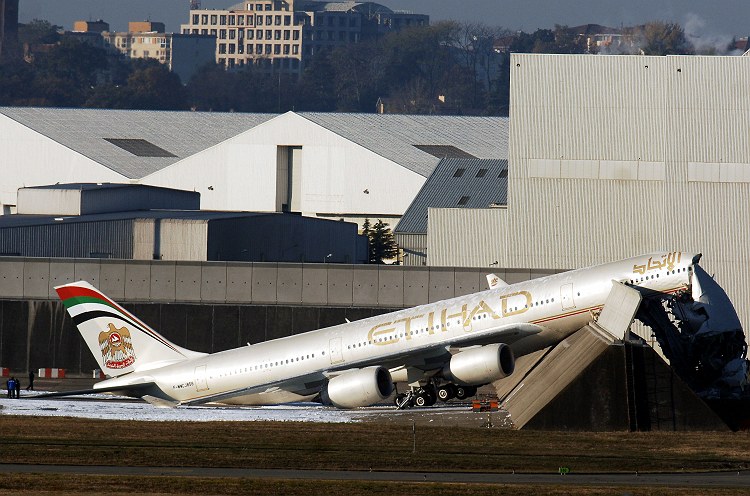
The
four-engined ultra-long-haul aircraft, due to
be delivered to
Etihad
on Nov 21, was involved in a collision on the
ground during engine testing at 5.00 pm local
time in Toulouse.
The aircraft was undergoing engine run-ups at
the time it crashed through a barrier. The
Etihad spokesman said it is too early to
comment on whether it will receive
compensation either from Airbus or the third
party maintenance provider overseeing the
tests. He confirmed that the Airbus aircraft
was registered in France with a French
registration in preparation for its planned
handover to Etihad.
A340
Long Range Aircraft
Our
Doc
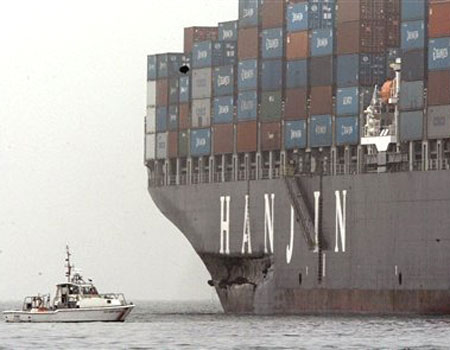
The
Cargo Letter for
Nov. 11 2007 --
In
Collision With Oakland Bay Bridge
"Human
error factors" probably were involved in a ship
crash and oil spill that killed nearly 400 birds
in San Francisco Bay and prompted a federal
criminal probe, the U.S. Coast Guard said Nov.
11. The U.S. attorney in San Francisco has
opened a federal criminal investigation into the
Nov. 7 crash of the
M/V
Cosco Busan
to determine whether the captain & crew
violated federal maritime laws.
The
Embarked Harbor Pilot Is Reported To Blame
Vessel "Maintenance" For The Mishap, At Least In
Part. Sources To
The
Cargo Letter
Tell Us That One of The Two Radar Units Aboard
M/V
Cosco Busan Did
Not Function As She Began Departure From
Port
of Oakland
On Nov. 11 2007. Dramatic, But Not A
"Maintenance"
Problem Sufficient To Explain The
Incident.
McD
James
Conn
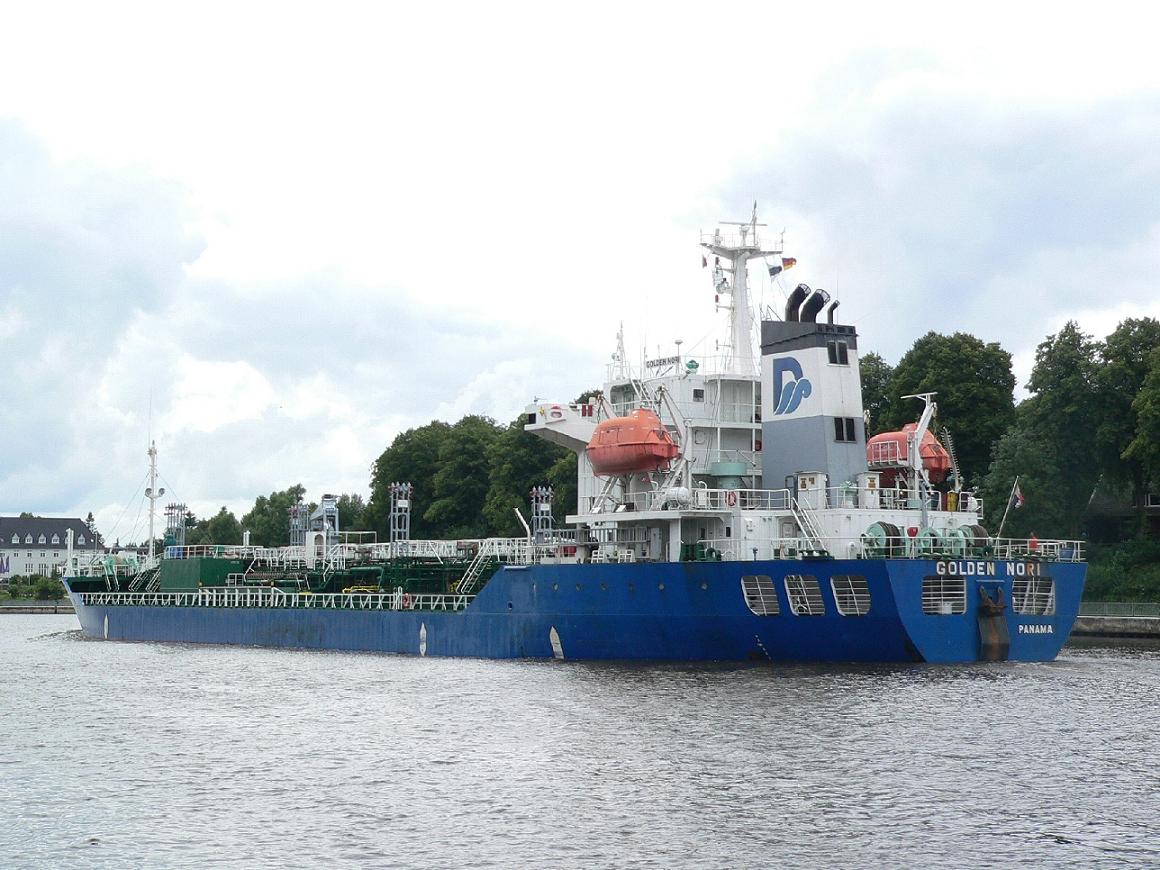
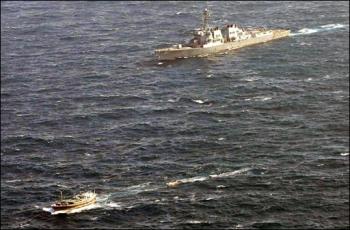
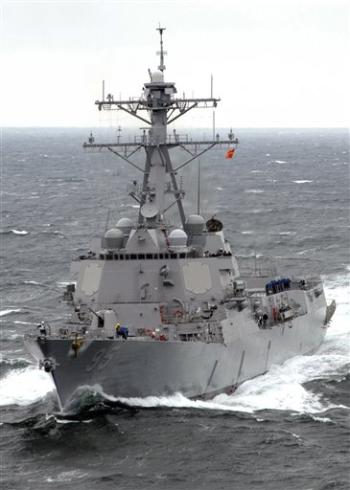
The
Cargo Letter for
Oct. 31 2007 --
Naval
Combat Off Somalia
U.S. Navy sailors
brought injured North Koreans aboard their
destroyer USS
James E. Williams for
medical treatment after the Koreans were shot
& wounded in a battle with pirates off the
coast of Somalia, the U.S. Navy said Oct. 31
2007. The destroyer USS
James E. Williams
assisted Korean sailors who retook control of
their North Korean-flagged vessel Oct. 30 in a
deadly battle with Somali pirates who had
hijacked the VESSEL late Oct. 29
2007.
The U.S. Navy
also confirmed that other American warships sank
two pirate skiffs late Oct. 27 after answering a
distress call from a hijacked Japanese chemical
tanker and said U.S. ships were still monitoring
that vessel.
USS
James E. Williams
(DDG-95)
Largely
unknown & unappreciated by the media, there has
been a multi-national task force operating in the
lonely waters off Somalia for the past several years.
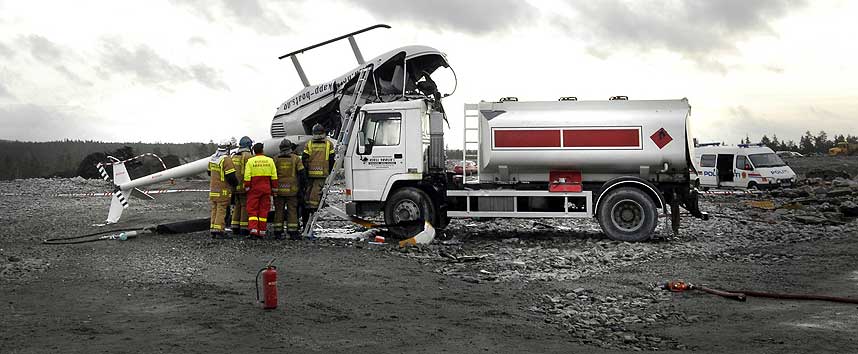
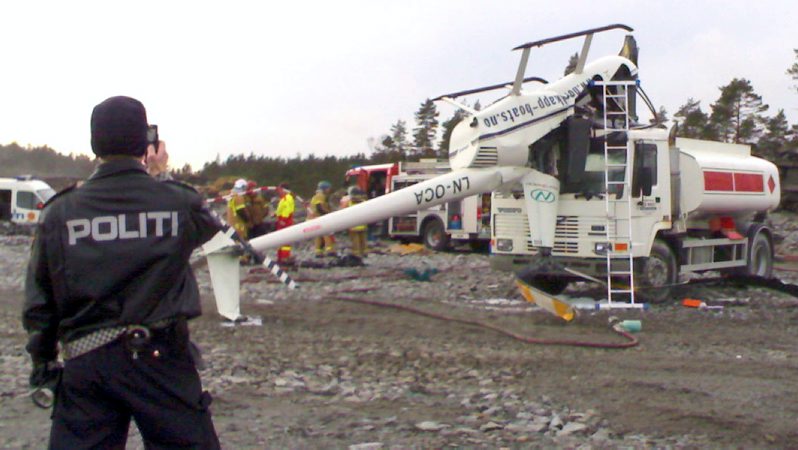
The
Cargo Letter for
Oct. 30 2007 --
Collision
In The Gulf
A
spectacular helicopter crash in Østfold
County, Norway luckily ended without serious
injury. A helicopter apparently being used to
photograph a construction site in Rudskogen went
out of control before crashing upside down into
the cab of a fuel tanker truck. Several
eyewitnesses at the site who watched the
accident in disbelief.
Air
Europa
Our
Doc
The
Cargo Letter for
Oct. 27 2007 - Katowice, Poland
Air
Europa Charter
Boeing 737-800. Bringing
Polish Military Forces Home From Peacekeeping
Assignment In Lebanon.
Editor
Note:
Air
Europa
Our
Doc - that
enenmatic figure who has never failed us over the past
decade.
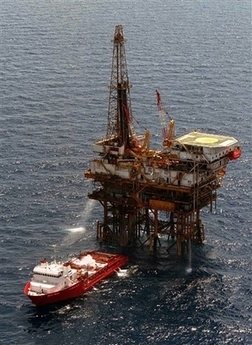
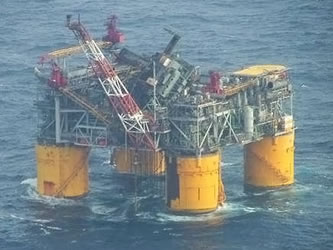
The
Cargo Letter for
Oct. 24 2007 --
Collision
In The Gulf
Mexico
state-owned drilling platform
Usumacinta
slammed
into the
Kab 101 Light-Production Rig
on
Oct. 2, killing 21 people. Waves as high as 8
meters knocked the rig and platform together,
damaging a drilling mechanism & pipes and
causing fuel & oil spills
Wonderful
site! Great examples of what can, and does, go
wrong! Funny, in a perverse sort of way, as long
as it doesn't happen to you.
Alistair
J. Lee
-- Lead Production Engineer, Operations
Dept., OG/OPS/PRO, TOTAL
E&P UK Ltd
McD
Pemex
Scott E.
Adams
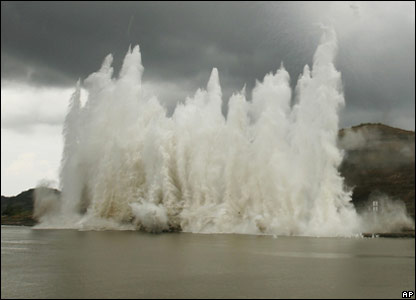
The
Cargo Letter for
Sept. 5 2007 --
Another
Step For Mankind
A
crowd of 30,000 on Sept. 5 observed the start of
work on expansion of the Panama Canal. Officials
marked start of the US$5.25BN project with
speeches and by setting off explosive charges to
begin the dry excavation project on
Paraiso
Hill
for the channel that will access a new set of
locks. The new Pacific
Locks
access channel will ultimately connect the
Gaillard Cut to the new locks.
Panama
Canal History
Expansion
Project
The
Cargo Letter for
Sept. 4 2007 --
Another
Day At The Beach?
291
meter container
M/V
Maersk Diadema (built
2006) port of Balboa, Panama for Lazaro Cardenas
to Yokohama, Japan,
ran
aground
on approach to Lazaro
Cardenas,
Mexico on Sept. 1. No pilot was aboard at the
time of the incident.
(Tues.
Sept. 4 2007)
McD
Valued
& Anonymous Readers -- with access to the
source
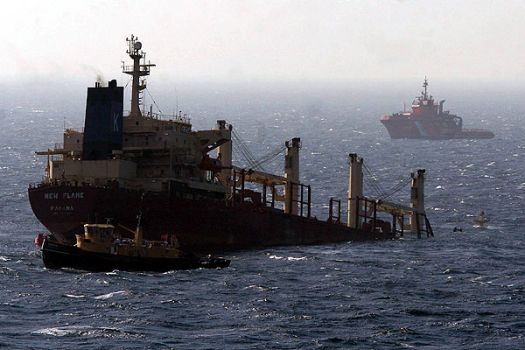
The
Cargo Letter for
August 13 2007
--
Bulker
Sinks - Half Way
Panamanian
flagged 43,815 DWT bulker, the
M/V
New Flame, Newark,
New Jersey
for
Iskenderun,
Turkey with 23 crew &
scrap
-- In
Collision
early Aug. 12 with -- Danish flagged 46,362
DWT double-hull product carrier
M/T
Torm Gertrud,
Augusta,
Italy
for U.S. with
37,000
tons of
gasoline
.
M/V
New Flame sunk
in shallow water less than a mile from
Gibraltar. A;; 23 evacuated and the maritime
authorities in Gibraltar and Spain are
supervising salvage plans which are presently
being developed by Tsavliris under an LOF.
M/T
Torm Gertrud
is
presently at anchor in Algeciras effecting a
change of crew.
Hildegard
E. Krause -
Roanoke
Trade Services,
San Francisco
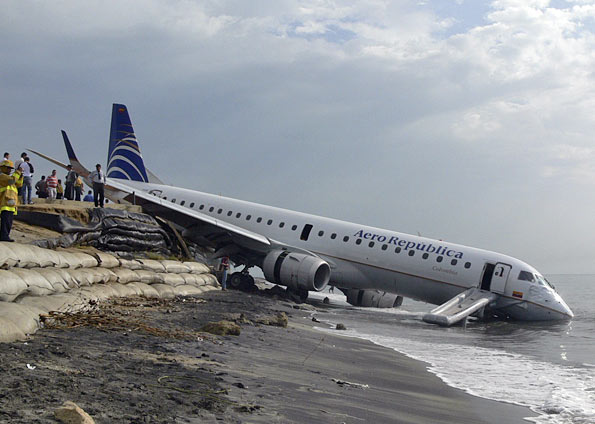
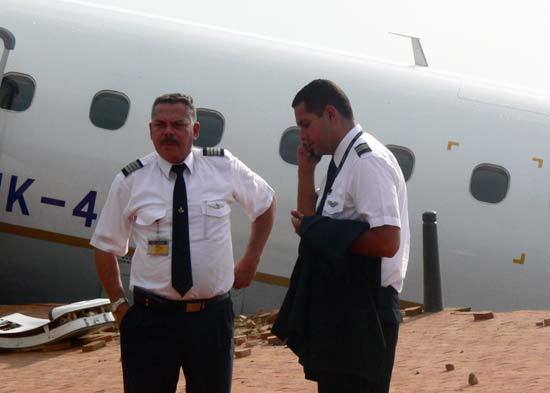
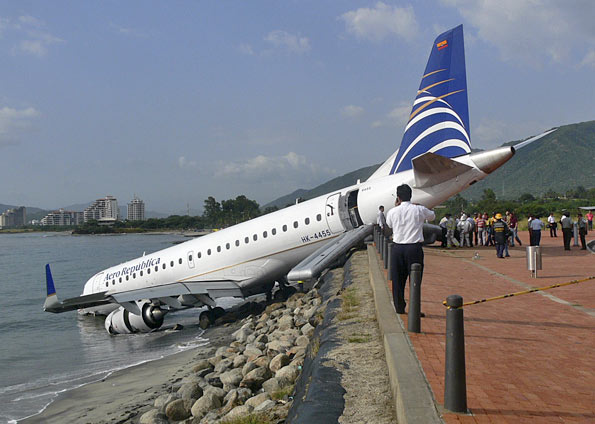
Meanwhile,
Some 1,500 Miles Away In Brazil -
The
Cargo Letter for
July 17 2007 --
Major
Air Disaster -- All Aboard Are Lost
ALERT>>
Airbus 320, TAM
Airlines
Flight
JJ3054, Porto
Alegre to
Sao Paulo,
Brazil with 176 people,
skidded
off runway, crashed into a building and
caught fire
while attempting to land in heavy rain at Sao
Paulo's Congonhas Airport. Slippery runway
conditions and /or unsafe runway design are
believed to be the
cause.
At least 200 people, including some on the
ground, are feared
killed.
(Tues
July 17 2007)
McD
Embraer
E190LR
TAM
Airlines
Our
Doc --
Valued & Anonymous Insider On Our Pages For Many
Years. The Man Who Knows Too Much.
Here
are the issues at stake that have caused problems
in Shanghai and elsewhere in China:
First,
panicked exporters rushrd orders and goods out
of the country in an effort to export as much as
possible before July 1st, when the export tax
rebate cut goes into effect. Hence, volumes,
already high for this time of the year, just got
higher.
Anonymous
Contributor - A
Long Time Source To The
Cargo Letter
NOTE: The Cargo Letter wants you to know that by keeping the identity of our contributors 100% confidential, you are able to view our continuing series of "Cargo Disasters.". Our friends send us materials which benefit the industry. The materials are provided to our news publication with complete and enforceable confidentiality for the sender. In turn, we provide these materials to you.NOTE: Please bring to our immediate attention any feature information which you believe may be incorrect.
| Cargo law Main Page | The Freight Detective | Law Navigator | Claims Calculator |
| The Freight Detective General Investigations | The Freight Detective Transport Investigations |
| The Logistics Chain | Photo Gallery of Cargo Loss | Our Staff |
| Trans-Cams | Forwarder/Broker Industry Chat & Issue Discussion Board |

The Law Offices of Countryman & McDaniel
Eleventh Floor LAX Airport Center
5933 West Century Boulevard
Los Angeles, California, 90045
(310) 342-6500 Voice
(310) 342-6505 Fax
![]() to
The Law Offices of Countryman &
McDaniel
to
The Law Offices of Countryman &
McDaniel